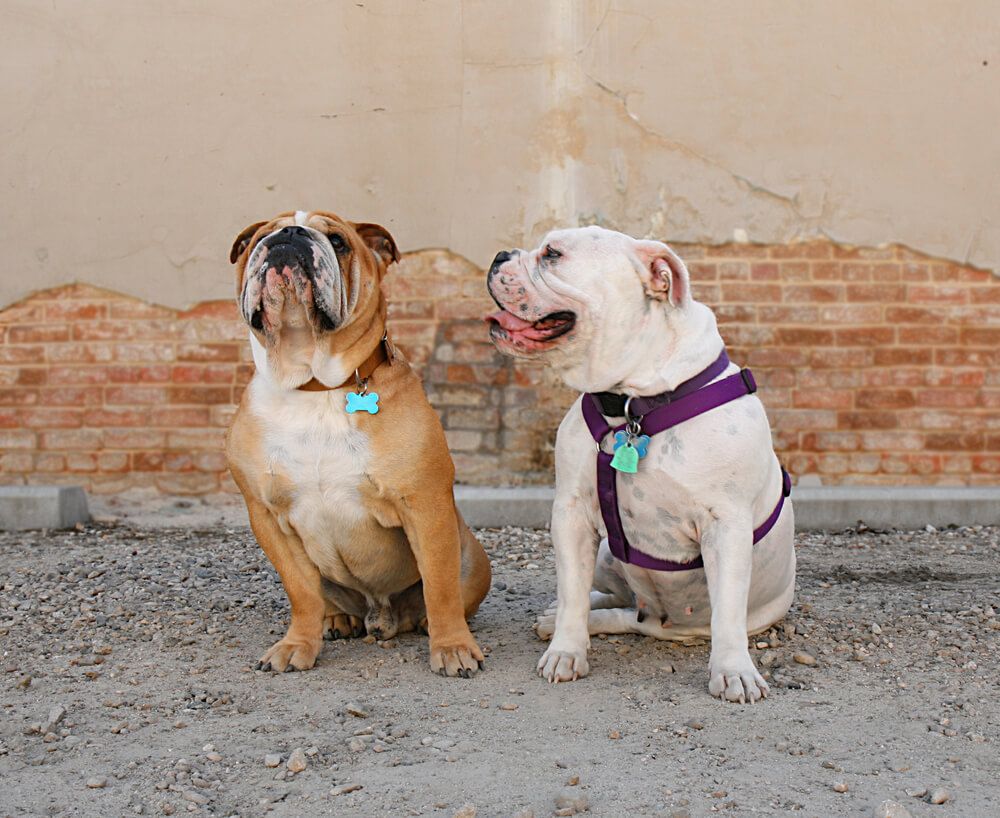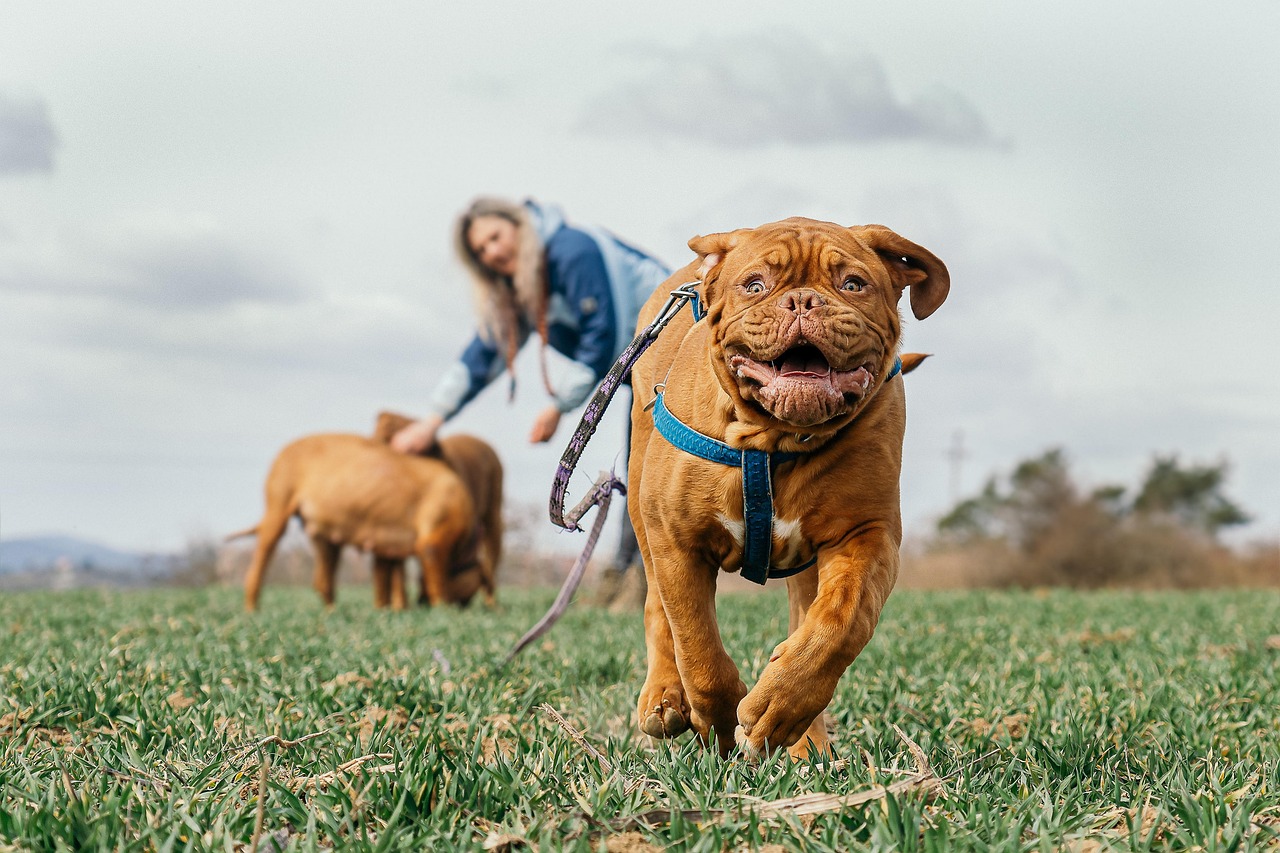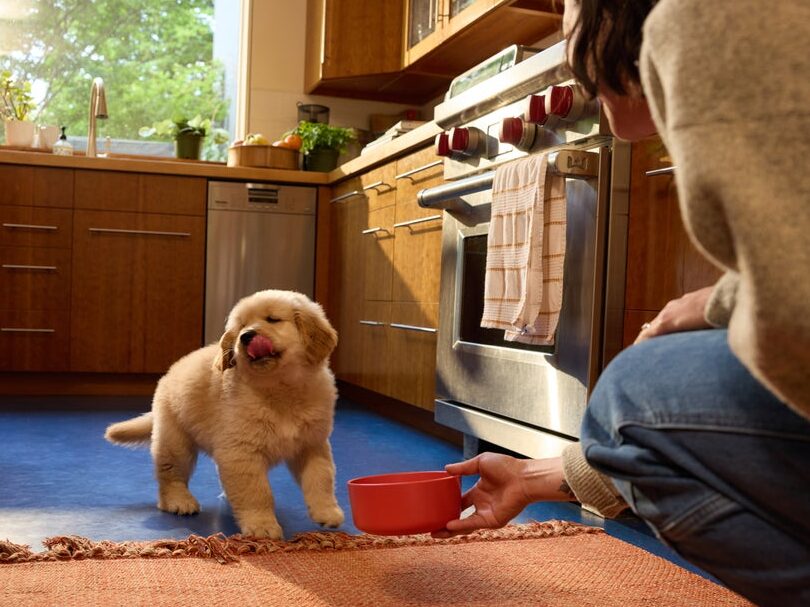Hey Ollie blog readers! We’re offering you an exclusive 60% OFF your starter box! Try now!
What’s more fun and freeing than taking your dog out on a romp in the park, beach, or trail? It’s great to hang at home with your four-legged companion and just relax, but the best memories are made when you get out and about!
What many dog parents want to know is how to best keep their pup in line when they hit the great outdoors.
As we all know too well, dogs can get easily distracted by new friends (canine or otherwise), natural attractions, and other stimuli. That means you need to keep them close if they aren’t star performers off-leash.
So, what is the most effective and humane way to keep your dog safe and secure? You want a system that gives a bit of freedom while not subjecting them to any unnecessary discomfort.
Right now we’re comparing the classic dog collar to more complex harness, giving you the pros and cons of each and some tips on how to train on-leash.
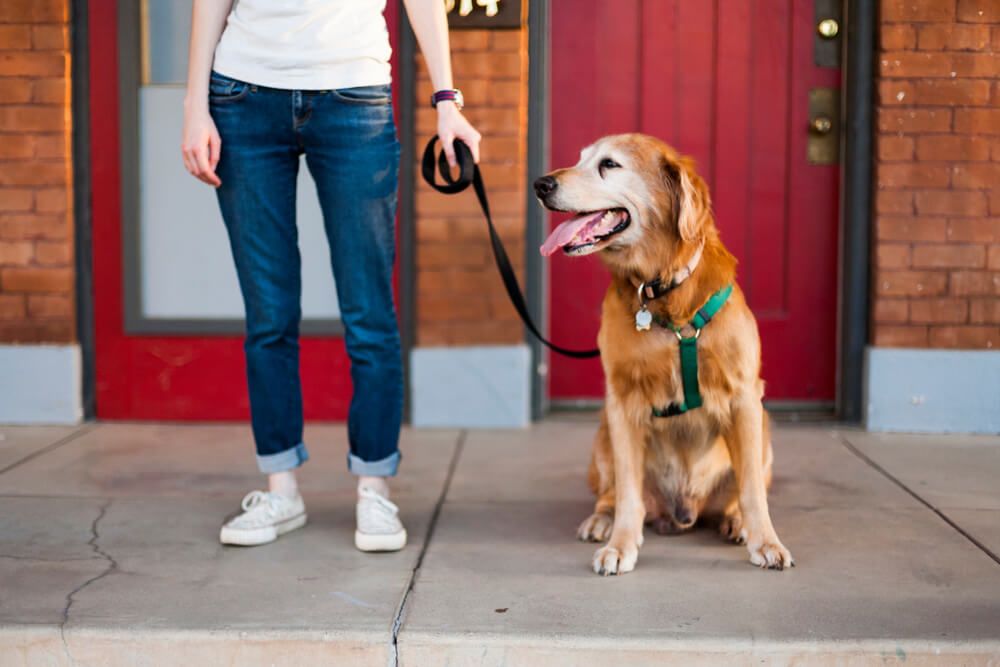
Big benefits of dog harnesses
There are many situations where a harness is preferable to a collar, and it doesn’t matter whether you own a hefty shepherd, a powerful pitbull, or a toy breed.
The experts at the American Kennel Club definitively state that harnesses give you better control over your dog, and this is ultimately the most important factor when it comes to ensuring the safety of yourself and others.
Most dog parents have been in a sticky situation where it looks like your pup is eager to head for the hills or engage in some roughhousing with a new doggy friend. In these scenarios, you want to be the one in the driver’s seat, and a harness is the best tool in your arsenal to keep everyone safe.
A harness is the best way to stay in control without causing harm to your dog.
- No tension is applied directly to the neck.
- Tension is distributed across the front of the dog’s chest area.
- Most materials are soft and comfortable.
- Easy to put on and remove.
- Better for puppies still building neck strength.
Harness designs will also differ based on the size and breed of your dog.
For smaller pups, a back-clip harness is probably all you need, since they will not be pushing ahead with much force. Buckles can be small and straps lightweight.
Going up a size, you’ll need some beefier buckles and thicker straps. Even medium-sized dogs have some unexpected horsepower, and if you are on the smaller side yourself, it’s worth investing in some extra leverage.
Finally, the big dogs will need harnesses that more closely resemble personal flotation devices! That means multiple, thick straps, many buckles, and even some padding for comfort.
Harnesses are often recommended when taking your new puppy out for its first strolls around the neighborhood. Not only do you want to be captain of the ship at all times (especially in the city), but the young pup’s neck may also not be strong enough to handle the yanks of the leash on a standard collar.
As your dog gets more trustworthy and well-trained, you can rely more heavily on the collar. Generally, the pup will still behave and respond as if he or she is still wearing a harness.
We suggest having a harness at the ready even if you have a well-trained dog. If you adventure out someplace totally new or potentially hazardous, you’ll want the extra control.
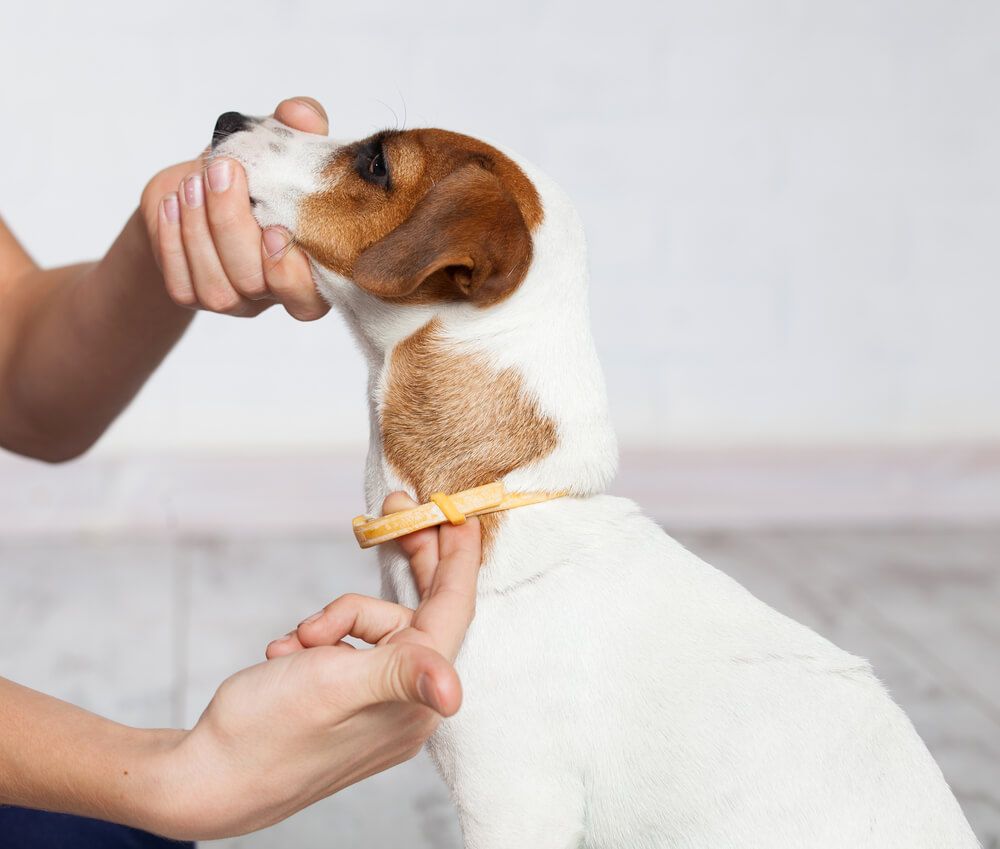
Collars are useful, too!
There are some clear advantages to having a good collar for your dog as well.
First of all, it’s one of the best ways to identify your pup, and you know that those ID tags and licenses are just part of the deal when owning a pet. Even if you are super confident your dog will stick by your side, it’s always smart to have some sort of ID attached if a worst-case scenario takes place.
While most of us think that the flat collar is the only option in this category, there are a lot more options out there beyond just the traditional collar.
The most popular variation is a combination of a flat buckle collar and slip collar, known as the Martingale. This setup gives you a ton of control over your pup and minimizes unwanted strain. It’s also way harder for this type of collar to come undone, which is a too-common occurrence for our more hyper companions.
A prong collar is a training collar meant to pinch around the dog’s neck when pulled, not dig in and cause harm.Prong collars are controversial, yet commonly used when training larger, more stubborn breeds.
There are also other types of collars, like the choke collar, which can be a bit more dangerous and only should be used under the guidance of a professional trainer, if at all.
We like to make sure our pups are comfortable at all times, and if they need a more serious restraint to behave properly, it probably reflects more on our methods as trainers.
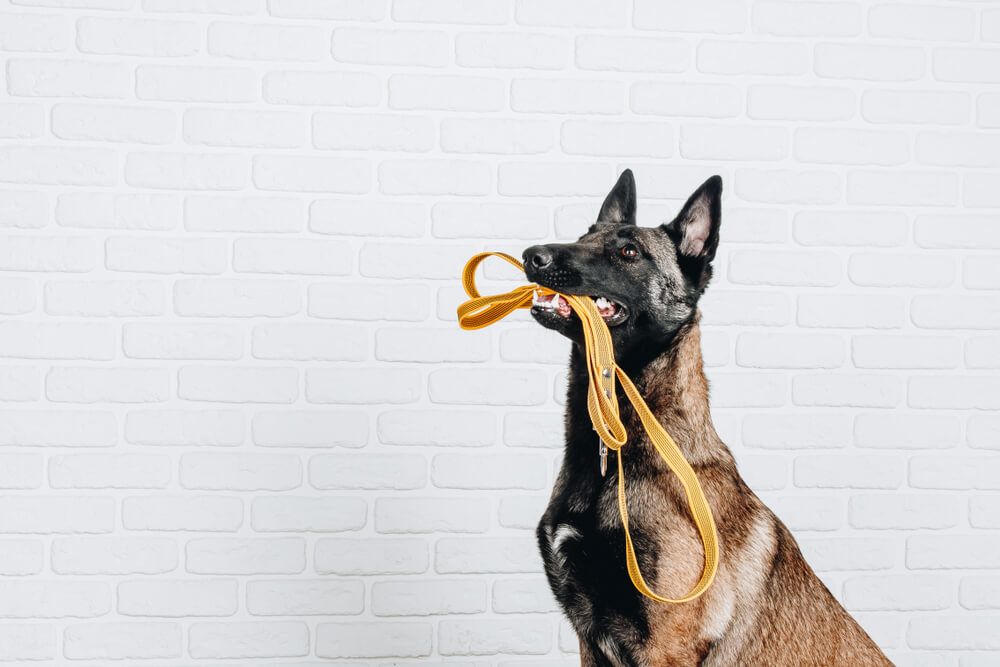
There’s no substitute for good training
Speaking of training, we should note that no harness or collar is a sufficient substitute for establishing good behaviors when your dog is a young pup.
A harness may be a helpful tool in the training process, but it’s not a magic fix. At the end of the day, you’ll need to train your dog with both a harness and a collar to ensure they are ready for any situation, according to Whole Dog Journal.
Just use common sense when dealing with any sort of restrictive equipment. You don’t want your dog to play with other dogs while fully strapped up, since it may lead them to harm. Since the buckles and straps can get caught on objects, this can cause injuries. Even collars should be taken off when it’s time for some light roughhousing.
Again, this comes down to how well trained and responsive your dog is overall. It’s best to avoid full-on doggie play dates until you have the fundamentals like sit, stay, and no down pat. Eventually, you may even want to go fully off-leash and really experience the freedom of the wild, but this can only be done with good training habits.
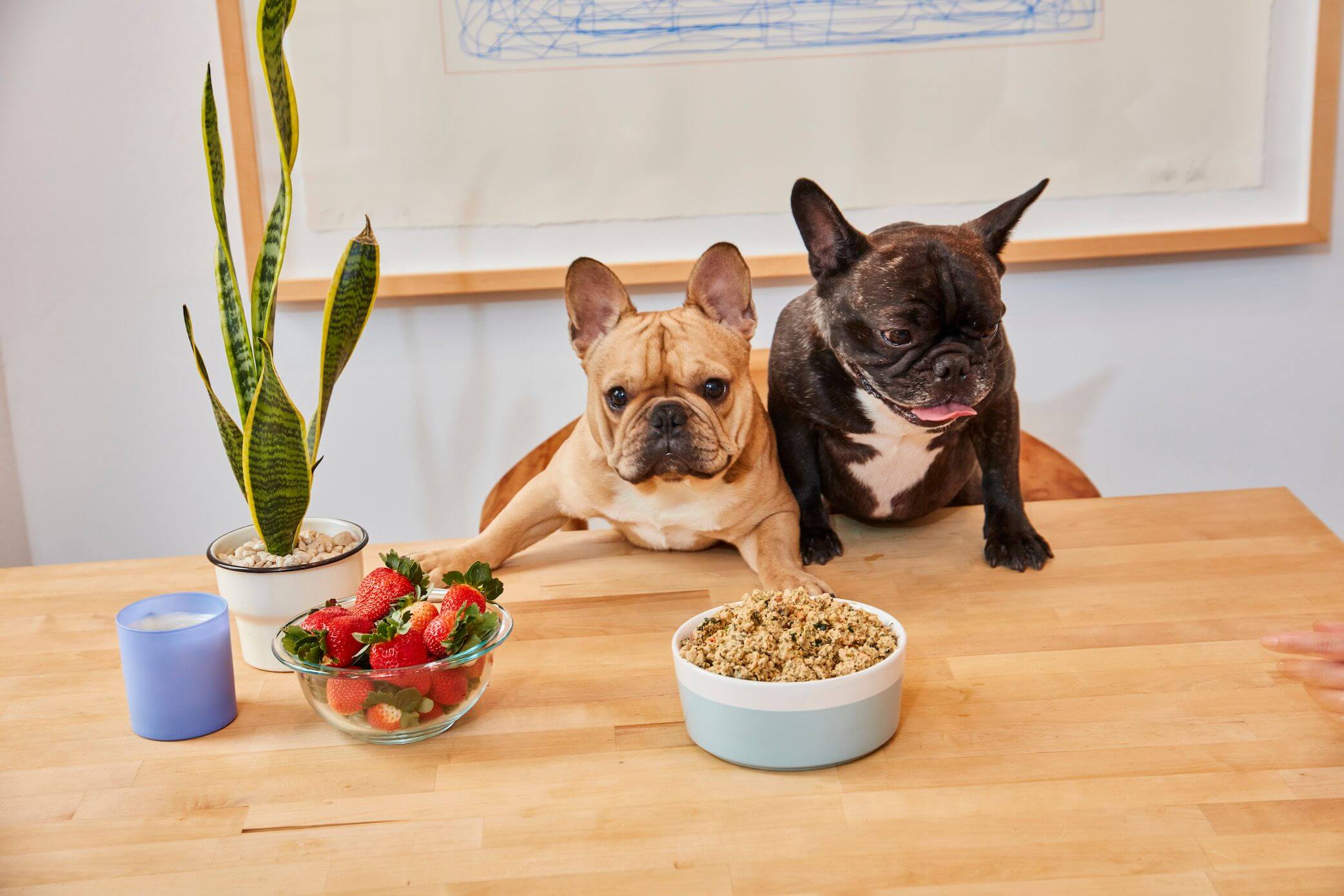
It all circles back to diet!
The harness vs. collar debate is just one of the thousand things you have to consider when bringing a new dog into your life. Even if you fancy yourself an expert trainer, each pup comes with its own challenges and forces you to come up with new solutions.
With so many variables to account for, we at Ollie decided to make meal planning and diet design a thing of the past, so you have one less thing to worry about and can put your focus on training, and ultimately bonding with, the new member of your family
How do we do it? t’s pretty simple at its core: Learn as much as possible about your dog (breed, age, health, activity level) and create a meal plan that matches his or her every need. All you have to do is fill out the pup assessment and we map out every imaginable detail!
No more will you have to wonder how much food to feed your dog, or whether they have the right balance of nutrients for their level of activity.
Plus, the meal plan is not set in stone once you make your first order. At any time, you have the ability to go into your profile, make tweaks that reflect any health updates or personal requests, and your next delivery will match your changes.
Customers rave about how much their dogs love our original recipes, which are fresh takes on classics like Beef and Potatoes or Chicken and Rice. These gently cooked, freshly prepared, individually packaged meals stay in the fridge or freezer and pack a ton of nutrition into just a few scoops.
In short, Ollie puts your dog’s diet on autopilot, saving you time at the store and at the vet. If you check one thing off your doggy to-do list this year, this is it.
If at first you don’t succeed…
Selecting the perfect collar or harness for your dog is one of those things that takes time, observation, and a bit of trial and error. You likely won’t make the right selection at first, so don’t get discouraged if you have to try a few different approaches.
But when it comes to something super important like dog food, you want to get it right the first time, which is why you should take a closer look at Ollie. We deliver delicious meals for dogs directly to your door and make it easier than ever to provide your pup with the healthiest food available.
So while you’re out there training, playing, and having a great time, you can rest assured knowing that we’ve got you covered on the food front.
The Ollie blog is devoted to helping pet parents lead healthier lives with their pups. If you want to learn more about our fresh, human-grade food, check out MyOllie.com.
Tagged As:

The nutrition your dog needs,
the food they want.

Enjoying our articles? Subscribe our Newsletters and get new articles directly to your inbox
You might also like
23 September 2025
6 MINS READ
Back to School: Training Your Dog at Any Age
As we hit back-to-school season rolls around, it’s not just kids who benefit from sharpening their skills and learning something new—our dogs can, too! Training isn’t limited to puppies or p…
by Ollie Pets
23 September 2025
7 MINS READ
Lace Up and Leash Up: A Beginner’s Guide to Running with Your Dog
Running is one of the simplest ways to stay active, and it’s even better with a canine companion. Not only does running with your dog keep you both in great shape, it also strengthens your bond …
by Ollie Pets
13 May 2025
8 MINS READ
Puppy Training Guide & Behavior Timeline
Bringing home a puppy is pure magic. It’s also pure chaos—tiny teeth, zoomies, accidents in the house, and moments that make you wonder if you’re raising a future genius or a tiny tornado. …
by Ollie Pets
